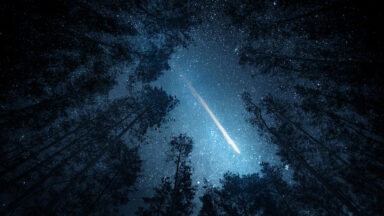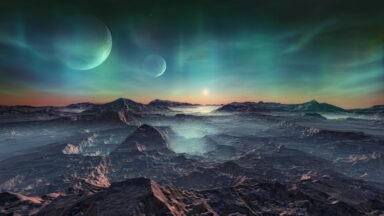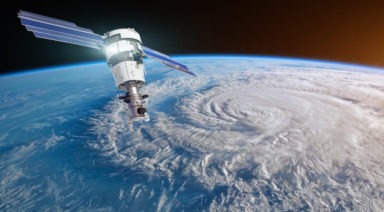Researchers Discover Space Anomalies In Our Solar System That Will Shock You
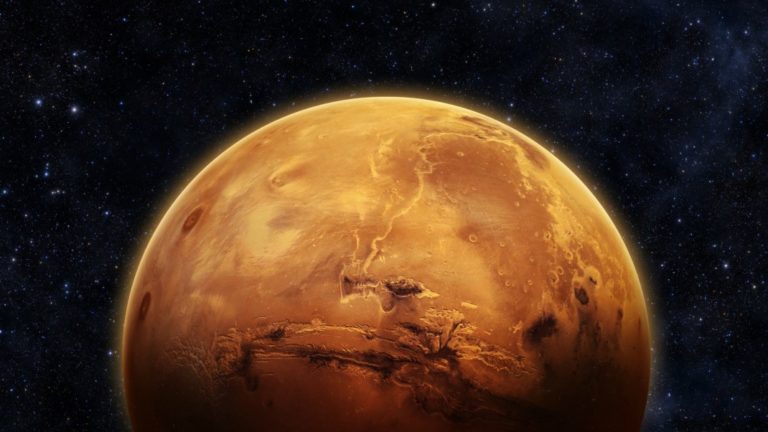
What is a space anomaly? “Something that deviates from what is standard, normal or expected.” What is an anomaly hunter? A person or group that researches official images from NASA, ESA, and IRSO amongst others. Billy Carson and Thomas Mikey Scrøder Jensen are co-founders of the United Family of Anomaly Hunters (UFAH).
The goal is to look for something that deviates from what is standard, normal or expected. This simply means “out of place” objects that we deem to be space anomalies.
Hidden in Plain Sight
The United Family of Anomaly Hunters(UFAH) are a team of fourteen research groups that have come together to expose hidden artifacts and space anomalies on planets, moons and comets in our solar system. The discoveries so far have been spectacular and jaw-dropping, to say the least. Many of the UFAH’s members space anomalies have made international news on top new outlets like CNN and the Huffington Post.
After downloading close to one million images from official sources, the team at UFAH has discovered thousands of anomalies hidden in plain sight. It appears that NASA and Caltech try to cover up some of the images with distortion and blurring techniques. But it seems they always leave a few breadcrumbs for us to find.
Is this some form of soft disclosure? The image below describes the method used by anomaly hunters to discover or enhance space anomalies in official images. Virtually anyone can follow these simple steps and begin their journey into researching space anomalies. This very accurate enhancement guide was developed Rami Bar Illan of Exclusive Mars Images. He is one of UFAH’s top space anomaly hunters.
Source: Exclusive Images
We encourage you to try and duplicate our techniques and investigate our sources. The more eyes we get on these images, the better.
Comet 67P
Let’s take a look at a few examples of some exceptional space anomalies. Our first visit will be to a comet. This comet is called 67P. On September 30, 2016, the Rosetta spacecraft was forced to crash land on the surface of Comet 67P. During the mission and the decent to the surface, Rosetta took some amazing photos of what we would consider space anomalies.
Source: European Space Agency
In November 1993, the International Rosetta Mission was approved as a Cornerstone Mission in ESA’s Horizons 2000 Science Programme. Rosetta will be the first spacecraft to orbit a comet’s nucleus.
Source: European Space Agency
Since then, scientists and engineers from all over Europe and the United States have been combining their talents to build an orbiter and lander for this unique expedition to unravel the secrets of a mysterious ‘mini’ ice world – a comet.
Initially scheduled for January 2003, the launch of Rosetta had been postponed due to a failure of an Ariane rocket in December 2002.
The adventure began March 2004, when a European Ariane 5 rocket lifted off from Kourou in French Guiana. During a circuitous ten-year trek across the Solar System, Rosetta will cross the asteroid belt and travel into deep space, more than five times Earth’s distance from the Sun. Its destination will be a periodic comet known as Comet 67P/Churyumov-Gerasimenko.
The Rosetta orbiter will rendezvous with Comet 67P/Churyumov-Gerasimenko and remain in close proximity to the icy nucleus as it plunges towards the warmer inner reaches of the Sun’s domain. At the same time, a small lander will be released onto the surface of this mysterious cosmic iceberg.
Source: Thomas Mikey Scrøder Jensen
While the countdown was getting closer to zero, Richard C. Hoagland Hosted his Other Side Of Midnight radio show with pictures. While airing pictures from various researchers was the topic of the radioshow named Imaging Series Part 3 – Celebrating 67P and Rosetta’s Final Voyage Home. While discussing the images, the picture below came up, and it was while looking at the picture that “the text” suddenly was spotted by Thomas Mikey Scrøder Jensen and Keith Laney. Independently of each other, they had found the same “text,” though both Keith and Thomas stated that “we cannot know for sure if it is text but it does look like it”
Did someone leave a message for future visitors on Comet 67P? There are dozens of anomalies on Comet 67p.
Here you will see a large opening with something either entering or exiting. The next image of the same opening the object is gone. These images were taken several weeks before the Rosetta dropped the lander on the comet.
Source: European Space Agency
Source: Billy Carson
The Curiosity Rover
Source: Originally from NASA
According to NASA, its rover named Curiosity is a Mars Science Laboratory mission and part of NASA’s Mars Exploration Program, a long-term robotic exploration of the red planet. Curiosity was designed to assess whether Mars ever had an environment able to support small life forms called microbes. In other words, its mission is to determine the planet’s “habitability.” Curiosity Rover landed on Mars in August of 2012 and has sent back 386,207 images to Earth. Or at lease these are the total number of images available to the general public. I am sure there are some more classified images that are not available to the general public.
Source: Originally from NASA. Explore NASA Curiosity Rover’s Image gallery.
Let’s have a look at some amazing space anomalies from the Curiosity Rover.
This space anomaly, which I discovered, was caught on film by NASA’s Mars Curiosity Rover on Sol 1051. The images below are official NASA/Caltech images and available on NASA.gov. We do not know exactly what we are looking at. We can only compare the shapes to what we know from Earth. To me, this looks like a woman standing next to some type of vehicle that may be lodged on a wall. There also appears to be another person there trying to assist.
This is a color-coded enhancement of the same image. The purpose is to give you a better perception of the anomalies.
Source: NASA
This next space anomaly is astonishing and so undeniable that it made international news. The object clearly looks like a machine of some sorts. We cannot say for sure what it might be. Again, we can only compare to objects within our own vocabulary and memories. Most people say that this space anomaly reminds them of R2D2 from Star Wars. This amazing discovery was made by Rami Bar Illan of Exclusive Mars Images. The space anomaly is from Sol 862 and was photographed by the Mars Curiosity Rover.
Source: Exclusive Mars Images and Sol 86
This space anomaly is the same one in the enhancement guide provided at the beginning of this article. Please take some time to study this amazing discovery. It truly raises a lot more questions than answers.
Sol 36
Now let’s move on to Sol 36. This is another outstanding discovery made by team member Martine Grainey of Martian Genesis. After deep analysis of this space anomaly, it appears to be a post-mortem photo of a man and woman on the ground crouched together. This scene is eerily reminiscent of photos from Mohenjo-Daro in the Indus Valley. The couple seems to be wearing extremely exquisite garments and headdresses. If was a real biological couple then they appear to have been stricken down right there.
Source: Martine Grainey
Below is the same image with labels detailing what we feel this space anomaly might relate to on Earth. In our opinion, there are just too many striking resemblances to be all coincidence. Please take a look and draw your own conclusions.
Source: Martine Grainey
Mohenjo-Daro
I want to take a quick detour to Mohenjo-Daro in the Indus Valley. Independent researchers and archeologists have come to the conclusion that Mohenjo-daro may have been victim to an ancient nuclear war in the distant past. There are still dead bodies lying in the streets holding hands. The animals did not even bother to scavenge the bodies. Also, the background radiation is elevated in the surrounding areas.
Some researchers postulate that the building structures and sand show signs of vitrification.
This is the transformation of a substance into a glass, that is to say a non-crystalline amorphous solid. This process requires heat is excess of 3,000 degrees. Surely not caused by a drought as some researchers have suggested. We typically see vitrification when structures and sand are exposed to highly intense explosives or bombs.
Source: Penn Museum
Mohenjo-Daro literally means ‘the mound of the dead’, which is just a term used to describe the 5,000-year-old city. It was during the proto-historic period that a full-fledged, planned city started functioning. It’s architectural beauty stunned modern architects around the world, as there was a well-planned street grid, along with a proper waste disposal system that would put our current waste management means to shame!
Source: National Geographic
Learn more in The Wars of Maldek.
Mercury
Now we are going to leave Mars and take a journey to the planet Mercury. There is an amazing super space anomaly I discovered on Mercury that truly baffles the mind. Let us take a look at the NASA Mercury Messenger Probe and it’s instruments first.
Spacecraft and Instruments
MESSENGER’s dual-mode, liquid chemical propulsion system is integrated into the spacecraft’s structure to make economical use of mass. The structure is primarily composed of a graphite epoxy material. This composite structure provides the strength necessary to survive launch while offering lower mass. Two large solar panels, supplemented with a nickel-hydrogen battery, provide MESSENGER’s power.
The “brains” of the spacecraft are redundant integrated electronics modules (IEMs) that house two processors each – a 25-megahertz (MHz) main processor and a 10-MHz fault-protection processor.
Attitude Determination
Attitude determination – knowing where the spacecraft is and in which direction it’s facing – is performed using star-tracking cameras and an Inertial Measurement Unit containing four gyroscopes and four accelerometers, with six Digital Solar Sensors as a backup. Attitude control is mostly accomplished using four reaction wheels inside the spacecraft and, when necessary, MESSENGER’s small thrusters.
MESSENGER will receive commands and send data primarily through its circularly polarized X-band phased-array antennas.
A key MESSENGER design element deals with the intense heat at Mercury. The Sun is up to 11 times brighter than we see on Earth and surface temperatures can reach 450 degrees Celsius (about 840 degrees Fahrenheit), but MESSENGER will operate at room temperature behind a sunshade made of heat-resistant ceramic cloth.
The MESSENGER Payload
MESSENGER’s science payload (i.e., its instruments) was carefully chosen to answer the mission’s six key science questions. Most of the instruments are fixed rigidly to the spacecraft’s body, so coverage of Mercury is obtained by spacecraft motion over the planet.
Source: Johns Hopkins University/Applied Physics Laboratory
Mercury Dual Imaging System (MDIS)
This instrument consists of wide-angle and narrow-angle imagers that map landforms, track variations in surface spectra and gather topographic information. A pivot platform will help point it in whatever direction the scientists choose. The two instruments will enable MESSENGER to “see” much like our two eyes do.
Gamma-Ray and Neutron Spectrometer (GRNS)
This instrument will detect gamma rays and neutrons that are emitted by radioactive elements on Mercury’s surface or by surface elements that have been stimulated by cosmic rays. It will be used to map the relative abundances of different elements and will help to determine if there is ice at Mercury’s poles, which are never exposed to direct sunlight.
Gamma rays and high-energy X-rays from the Sun, striking Mercury’s surface, can cause the surface elements to emit low-energy X-rays. XRS will detect these emitted X-rays to measure the abundances of various elements in the materials of Mercury’s crust.
Magnetometer (MAG)
This instrument is at the end of a 3.6-meter (nearly 12-foot) boom, and will map Mercury’s magnetic field and will search for regions of magnetized rocks in the crust.
Mercury Laser Altimeter (MLA)
This instrument contains a laser that will send light to the planet’s surface and a sensor that will gather the light after it has been reflected from the surface. Together they will measure the amount of time for light to make a round-trip to the surface and back. Recording variations in this distance will produce highly accurate descriptions of Mercury’s topography.
Mercury Atmospheric and Surface Composition Spectrometer (MASCS)
This spectrometer is sensitive to light from the infrared to the ultraviolet and will measure the abundances of atmospheric gases, as well as detect minerals on the surface.
Energetic Particle and Plasma Spectrometer (EPPS)
EPPS measures the composition, distribution, and energy of charged particles (electrons and various ions) in Mercury’s magnetosphere.
Radio Science (RS)
RS will use the Doppler effect to measure very slight changes in the spacecraft’s velocity as it orbits Mercury. This will allow scientists to study Mercury’s mass distribution, including variations in the thickness of its crust.
Now that we have established the incredible technology onboard Messenger and its capabilities. Let’s take a look at an amazing space anomaly that I discovered from the Messenger mission. Mercury was known in ancient Sumeria as the planet owned by Thoth, the god of writing from the Anunnaki Pantheon. Mercury is also known to the ancients as the morning star.
Source: Billy Carson. Learn more about the Secret Space Program.
Mercury’s Atmosphere
According to the NASA Messenger Data, the makeup of Mercury’s atmosphere is:
Oxygen: 42 percent Sodium: 29 percent Hydrogen: 22 percent Helium: 6 percent Potassium: 0.5 percent
One day on Mercury is 58 days on Earth. Most of the planet is not in direct sunlight for extended periods of time. There is liquid water on the surface! With traces of argon, carbon dioxide, nitrogen, xenon, krypton and billions of tons of water. We must unlearn what we have learned. Watch the Mercury Messenger Probe Official Water Disclosure Video.
Source: Billy Carson
UFAH Team member, Chris Moroney of Mars Anomalies, documented some strange space anomalies on Mercury. Find more images here. Here are two images that were taken by satellite of both Earth and Mercury. Again, you can see the striking resemblance of artificially lit cities. Could this be signs of life on Mercury? As always you are the judge.
Source: Billy Carson
We encourage you, the reader, to fully research these space anomalies and come up with your own conclusions.
Decades After Landing on Mars, We May Find Proof of Past Life
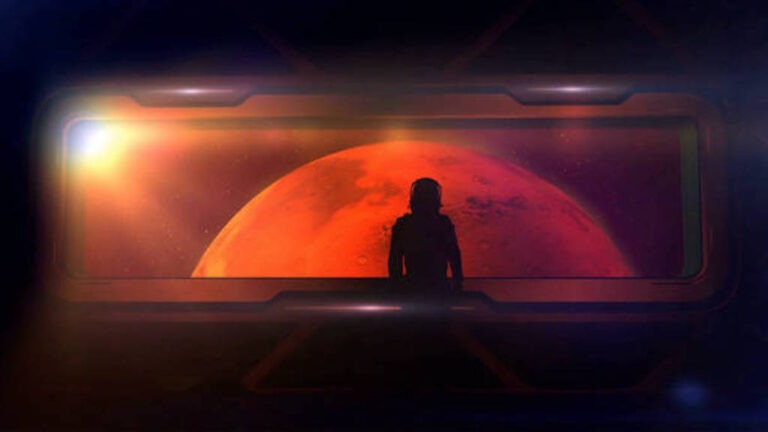
After 25 years of rovers landing on Mars, many are looking forward to the next chapter of Mars exploration, which may include excavating deep into the red planet. In July 1997, NASA’s Pathfinder landed on Mars and began its mission to demonstrate how a robotic rover would land on the red planet.
Using an innovative design, the rover landed on Mars with a parachute and a series of giant airbags to cushion its blow. The Carl Sagan memorial station and the Sojourner Rover outlived their projected lifespan, and in the years following sent magnificent images back to Earth.
The lander returned more than 16,500 images and the rover sent back 550 more, in addition to chemical analyses of rocks, soil, and data on wind and weather. The final transmission from the Mars Pathfinder was on September 27, 1997, but the data it provided helped scientists to conclude Mars was once wet and warm, and rounded rocks on the surface indicate they may have been worn down by running water, and if there was water, there could have been life.
Flash forward to today, NASA’s Perseverance Rover, on the red planet since February of 2021, is tasked with finding past or present life and seeing if humans could one day explore or colonize Mars.









